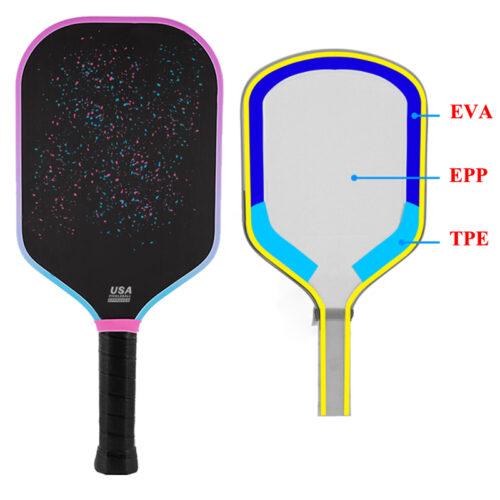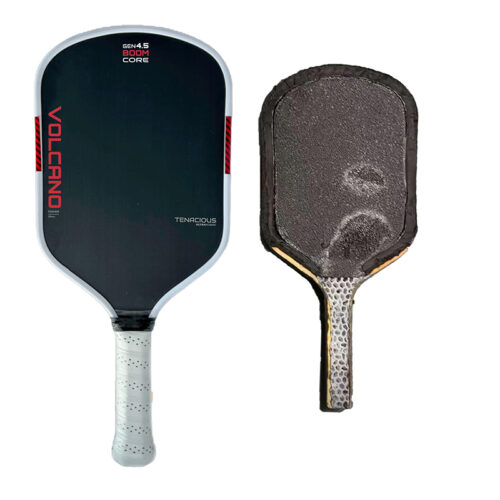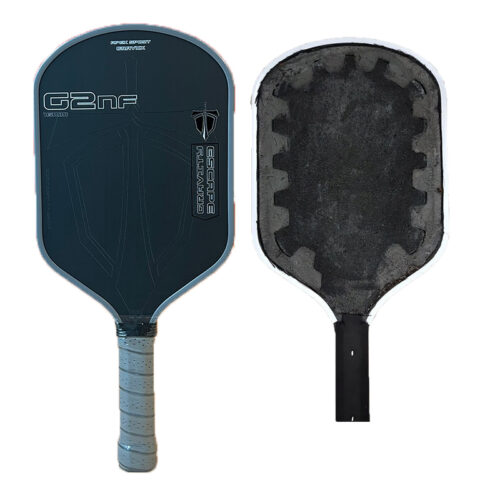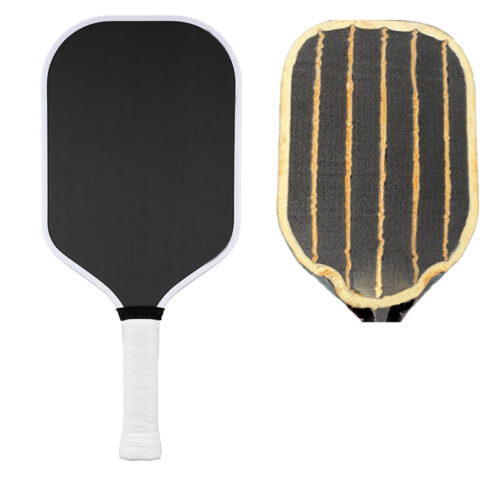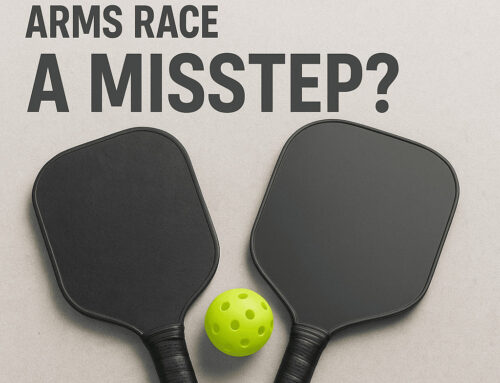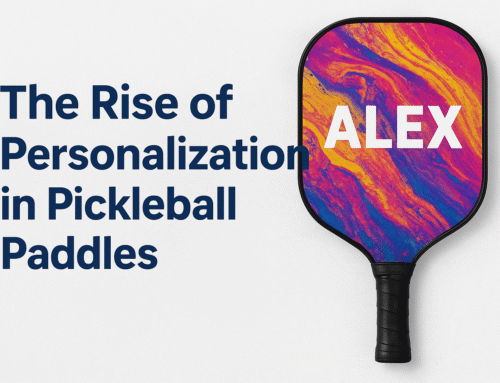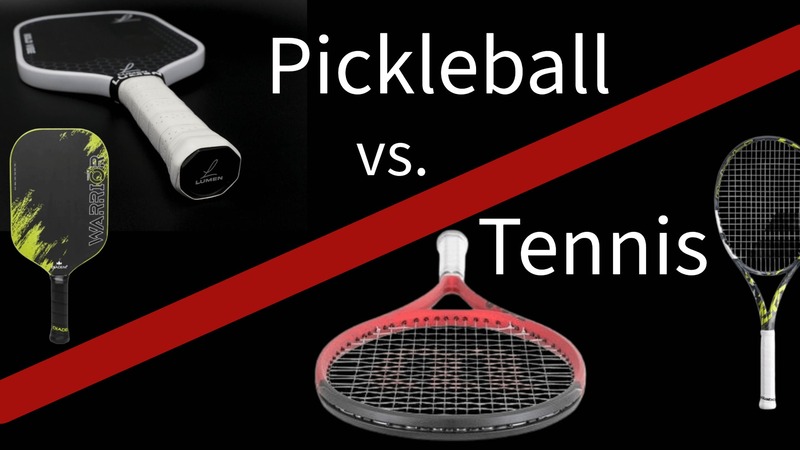
When you first grab a pickleball paddle, do you instinctively hold it like a tennis racket, ready to dominate the court?
Many tennis players do — until a few missed shots later, they realize something’s off.
As someone who transitioned from tennis to pickleball, I once thought it would be an easy switch — same strokes, smaller court. But my first few games were a wake-up call. The techniques that once made me confident suddenly failed. Shots went long or dove into the net.
It wasn’t my skill — it was the fundamental difference in design philosophy.
Let’s break down why the physics, structure, and materials behind a pickleball paddle make it a whole new game.
01. Different Courts, Different Physics
Tennis and pickleball may look similar at first glance, but the scale and dynamics are completely different.
A standard tennis court for singles measures 27 ft × 78 ft (8.23 m × 23.77 m). A pickleball court, however, is just 20 ft × 44 ft (6.1 m × 13.4 m) — about one-third the size.
That change in space completely transforms the movement patterns and physics of play.
- In tennis, players cover 3–5 km per match, relying on speed, spin, and explosive power.
- In pickleball, rallies are shorter and more strategic. The average ball speed ranges from 40–60 km/h, and total energy expenditure is roughly 70% of tennis.
Pickleball also has its own unique rule: the double bounce rule. After a serve, both sides must let the ball bounce once before volleying. Combine that with the non-volley zone (the “kitchen”) — a 7-foot area near the net where volleys are forbidden — and the tactics shift dramatically.
Where tennis rewards power, pickleball rewards control, precision, and patience.
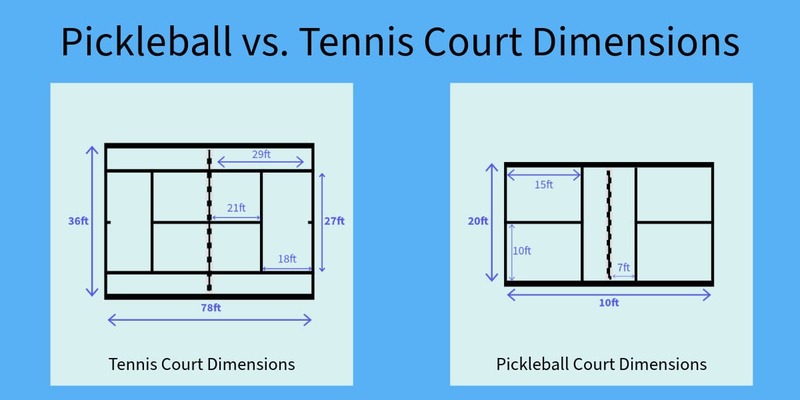
02. Design Logic: From Strings to Solid Faces
At first glance, both look like rackets — until you realize one has strings, and the other doesn’t.
Tennis rackets rely on a web of strings to create trampoline-like rebound energy.
Pickleball paddles, on the other hand, are solid-faced, typically made from carbon fiber, fiberglass composites, or wood — more like an oversized ping-pong paddle.
This one structural change shifts everything:
- Weight: Pickleball paddles usually weigh 7–8.8 oz (200–250 g) — about 40% lighter than tennis rackets.
- Handling: The lightweight build allows for faster hand transitions and agile volleys at the kitchen line.
- Vibration Control: High-quality paddles use polymer honeycomb cores with urethane damping layers, reducing vibration by up to 62%, helping prevent overuse injuries like tennis elbow.
In fact, a Journal of Sports Medicine study found that pickleball players experience 41% fewer joint-related injuries compared to badminton players.
03. The Sweet Spot: Not Just About Size
The “sweet spot” — the area on the face that delivers the most efficient energy transfer — works very differently between the two sports.
Pickleball paddles have a sweet spot up to 18% larger than a typical tennis racket, boosting forgiveness and control.
Why? Because of how shots are made.
Tennis strokes rely on long, full swings, so the sweet spot is placed closer to the top of the racket head.
Pickleball is all about compact swings in front of the body, so the sweet spot is centered for quicker, more responsive control.
Some advanced paddles even feature variable-density honeycomb cores, extending the effective hitting area up to 180–210 mm. Even off-center hits can maintain 82% of their spin efficiency — a major edge for players who live near the kitchen line.
04. Swing Weight: Two Completely Different Philosophies
Swing weight determines how heavy a paddle feels during play — and this is where the two sports diverge most.
Tennis rackets are designed with head-heavy balance. The added inertia increases power on full swings, letting players crush baseline shots using momentum.
Pickleball paddles, by contrast, are designed for neutral or slightly handle-biased balance. The goal is quick reactions, not massive drives.
This engineering makes a huge difference:
Players can switch from forehand to backhand instantly.
Less fatigue during long dinking rallies.
More consistency in close-range exchanges.
A study from the University of Utah Dynamics Lab found that the aerodynamic shape of pickleball paddles allows swing speeds of up to 130 km/h, roughly 15% faster than standard paddles — even with less effort.
The result? A perfect balance between power and precision.
05. Aerodynamics: The Overlooked Edge
The aerodynamic profile of a paddle has a direct impact on swing efficiency.
While tennis rackets fight drag during full-arm swings, pickleball paddles must optimize micro-swings and fast resets.
That’s where vented or “hollow-core” paddle designs come in — one of the newest trends in the industry.
Each triangular or honeycomb cavity serves a dual purpose:
Structural Support: maintaining rigidity and impact strength.
Airflow Optimization: shaping micro-turbulence to reduce drag.
In high-speed camera tests, airflow through these microchannels reduces aerodynamic resistance noticeably, allowing quicker acceleration and smoother deceleration — critical in a sport where reflexes define winners.
06. Transitioning from Tennis to Pickleball: A Quick Guide
If you’re a tennis player making the switch, understanding these design shifts will help you adapt faster:
- Adjust Your Grip: Keep your wrist relaxed. Over-gripping a pickleball paddle limits control and soft touch.
- Focus on Control, Not Power: Use compact, precise strokes instead of full-arm swings.
- Relearn Power Generation: Energy comes from the ground up — legs, core, and shoulder — but with shorter kinetic chains.
- Choose the Right Paddle:
- Wide-body paddles = larger sweet spot, best for beginners.
- Elongated paddles = more reach and spin for advanced players.
And don’t forget: the “kitchen rule” changes everything. No more net smashes like in tennis — you’ll need a whole new net game strategy.
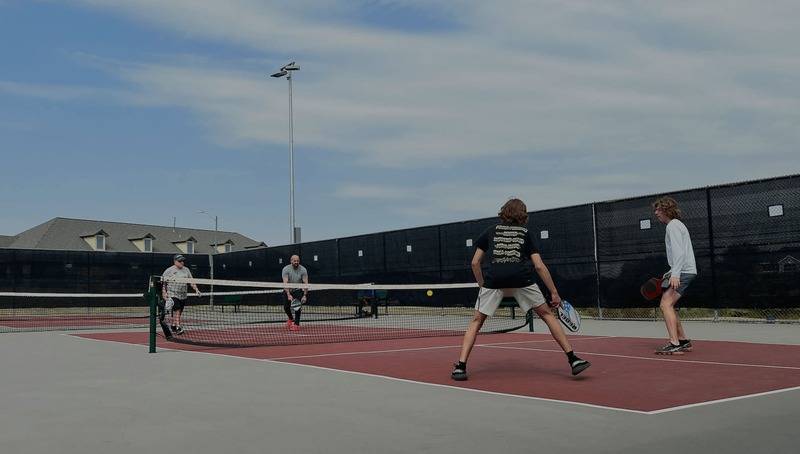
Final Thoughts
When a tennis veteran first picks up a pickleball paddle, they often find that their greatest strength — muscle memory — becomes their biggest obstacle.
It’s not about abandoning your tennis experience; it’s about unlearning what doesn’t translate.
The court is smaller, but the tactical universe is bigger.
The paddle is lighter, but the precision required is far greater.
Pickleball isn’t mini tennis — it’s a different science.
The End about Mayvoci
1)Design:Over 100 paddle designs and photography service to assist start-up.
2)Professional:Focus on various of paddles manufacturing for 6 years
3)Quality:Strict quality management system to provide safety and satisfaction for customers
4)Amazon:Flexible comprehensive solution to make sure each Amazon seller is well cared.
5)Excellent Team:Experienced paddle experts & dynamic sales team give you 5-star service

